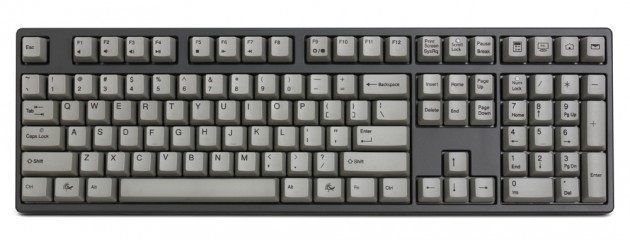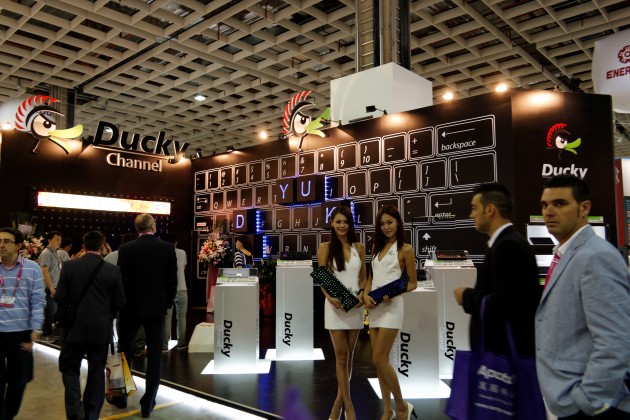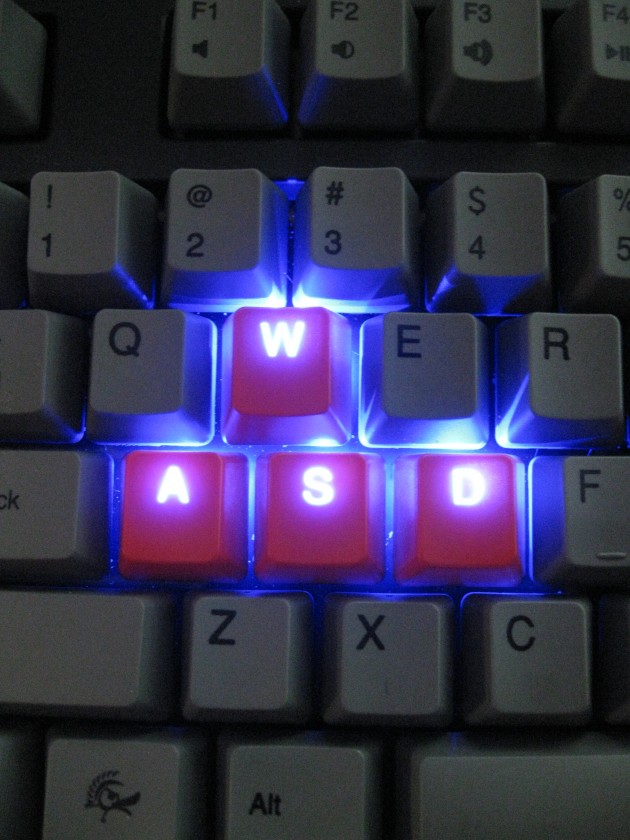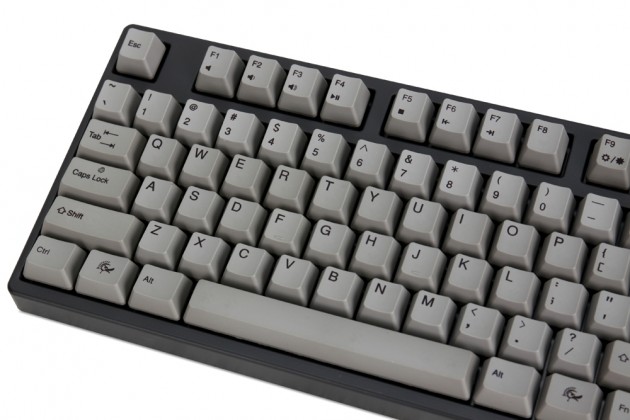Ask ten people about their keyboard preferences and you’re likely to get thirteen different answers. And unless you’ve been living under a rock, you’ve probably seen a dearth of manufacturers now offering mechanical keyboards—Thermaltake, MSI, Rosewill, the list continues on. For someone like me, who types for a living, this input device matters even more than the mouse.
Your super-short mechanical keyboard primer
When it comes to “mechanical” there’s only three different types these days. The oldest, and sturdiest, is the venerable IBM Buckling Spring design used in the Model M and continued to this day by Unicomp—the classic “clicky keyboard” of yore and the one us older folks remember. That’s also the only way you can get buckling spring.
Then there’s “Alps”—in quotes because they were once made by Alps Electronics. These days, they’re made almost exactly the same with some improvements and known as “Fuhua” or “Fukka”—manufactured by Forward Electronics. Some iconic keyboards you might remember that used Alps include the SGI Granite, the Dell AT101, and a number of Apple keyboards. If it’s a clicky Apple or Dell keyboard, it’s using Alps switches.
The most common you’ll encounter—and the one we’re covering here—is the Cherry MX switch. Cherry is offered in a variety of flavors from linear (MX Black, MX Red and MX Dark Grey) to tactile (MX Brown and MX Clear) and clicky (MX Blue, MX Green and MX White) and sold by the millions. This is what you’ll find on most keyboards advertised as mechanical. You’ll find them in everything from the Tt eSports family to Das Keyboard to CM Storm to Rosewill to Ducky.
The most important thing you need to know about any keyboard switch is what kind of switch it is—even before you get to the manufacturer. Linear switches have smooth travel throughout the keystroke with no feedback whatsoever. Tactile switches have some form of silent feedback, usually as a bump at or past the activation point. Clicky switches have both tactile feedback you can feel, and audible feedback—guaranteed to drive coworkers crazy in an open office environment!
Who and what is Ducky? I’ve never heard of them!
Mechanical keyboards aren’t just big, they’re absolutely huge in Asia. Ducky Channel is a Taiwanese company which, as the name might imply, started off as a channel supplier—selling high quality computer and electronic components to retailers. In 2008, they decided to take it a step further and go into manufacturing high quality keyboards—and they haven’t looked back since. Some of their innovations include bringing fully backlit mechanical keyboards, configurable backlighting, and semi-configurable controllers to mass production.
You won’t find Ducky at your average computer store, though. My Duckys come from their US distributor, MechanicalKeyboards.com—and that’s the only place in the US to get a Ducky. They are most decidedly not on the low side of the cost spectrum, either. There are more expensive ones out there—South Korea has a large custom designing community, and their keyboards routinely cost more than $300 before shipping to the US—but at $144, the DK9008G2 Pro PBT is one of the most expensive of Ducky’s entire catalog right now, and of course more expensive than most normal people are used to paying for keyboards at all.
Features? It’s a keyboard! Keyboards don’t have features, do they?

They do! There’s more layouts out there than you can shake a stick at—from “60%” to Ten-Keyless (no number pad) to the various 105 key full-size layouts. The DK9008G2 Pro is a full size, 109 key layout with Windows keys. As I mentioned, Ducky played a big part in bringing configurable controllers to the market and the DK9008G2 Pro is no exception here. Four DIP switches on the bottom allow you to swap the position of Left Control and Caps Lock, disable the Windows key, swap the position of Alt and the Windows key, and enable N-Key Rollover for USB.
The box doesn’t just contain the keyboard either. It comes with a very simple manual which explains the DIP switch settings, a high quality USB cable with a nice Ducky branded Velcro keeper, a set of WASD keycaps (we’re about to get to that), and a high quality wire keycap puller. One of the big things about mechanical keyboards is the ability to switch around your keycaps, either to change the layout or just give it a completely different look (or even feel.) It’s really a very well thought out package, and I found the wire keycap puller easier to use than the “ring” style.
The DK9008G2 Pro also features partial backlighting on the WASD cluster, being primarily targeted at gamers, and includes a high quality wire keycap puller and a set of four backlight compatible WASD keys in red. Performing the swap takes less than five minutes. Lock indicators use the same idea, using clear windows in the keycaps to make the LEDs indicating status visible.
“109 keys? There’s four more?” Indeed there is. Above the number pad, Ducky added four fixed function keys which open your calculator, ‘My Computer’, your email client and your web browser. On the surface, they don’t seem too terribly handy. Then, I realized that they don’t just open whatever the application is—if it’s open, they directly switch you to that application. Hooray, now I don’t have 13 copies of CALC.EXE open and I’m not guessing where I put Thunderbird!
Also very important to me was Media Functions. It’s a personal preference, one that Ducky meets reasonably well. I won’t deny preferring the layout that Thermaltake used on the Meka G1—it was brilliantly thought out and very natural to the fingers. Ducky has media function keys—volume controls, play, stop, next and previous tracks—but the layout is awkward. They’re located on the F1-F7 keys, but the Function Layer key is located on the right side of the keyboard, so switching tracks means both hands on the keyboard.
Arguably the coolest feature of the DK9008G2 Pro is the fact that it has dye-sublimated PBT keycaps. Most keyboards use ABS plastic for keycaps, which is then lasered to create the letters. It’s cheap and plentiful—and wears out very quickly. PBT is extremely resistant to wearing—just look at the keys on a 25 year old IBM Model M to see how resistant. Dye-sublimation means that the printing on the keys is actually embedded deep into the plastic, so even if you wear some of the surface off, you’ll still have a readable legend. And there’s no question—these are some of the thickest PBT keycaps ever made. They have a lot of weight and heft to them, and just the right friction so your fingers don’t go flying everywhere at 135WPM+.
Aren’t there any downsides?
There very much are. First and foremost: this is a weighty keyboard. It is physically heavy—weighing in at just over 3lbs. Between the heavy-duty plastic frame, the steel plate used to secure the switch mounting, and the very thick PBT keycaps, it is not a keyboard you want to be hauling around with you every day. However, this also ensures it stays well put on your desk—which is where it is right at home.
Second, there’s the media key layout. If you use these regularly, you will quickly learn to hate it, unfortunately—and there’s no way to fix it. Even my extremely long fingers can’t just hit ‘next track’ with one hand—and even if I could, I’d have to take my hand off the mouse. It’s really quite disappointing in that regard, enough that I find myself often not using them because of how difficult it is.
The detachable USB cable is a mixed bag—the new version is improved from the old ones, but the routing channels still require severe 90 degree bends. Connecting it at the underside of the keyboard is still rather difficult in the best of circumstances. Still, the cable itself is very high quality and comes with a Ducky branded Velcro strap for making it neat, but you definitely do not want to be unplugging it at the keyboard side often.
So should I go out and buy one?
This is where keyboards get into the realm of the subjective. My personal choice was for the Ducky DK9008G2 Pro with MX Greens—rated at 80cN actuation force, they’re the hardest Cherry MX switch to press and the closest to a buckling spring in feeling (disclaimer: I’ve been using buckling spring since 1991 and own a number of rare ones. I’m biased here!), but they also offer it with quite literally every other Cherry MX switch there is—even the extremely rare Dark Greys!
If you’re looking for one of the highest quality mechanical keyboards out there right now, then absolutely you should buy a Ducky. I’ve already logged somewhere north of 75,000 words on mine and it still looks like it just came out of the box (the convenient dust cover in the box helps there).
Which model? That’s entirely up to you and dependent on your preferences. If you want clicky switches, you can’t go wrong with Blue—and it’s cheaper than Green. If you prefer tactile, everyone I know loves MX Browns. If you want linear, well, it’s entirely up to you—just don’t buy into the “MX Reds best for gaming!” hype. Go with what is most comfortable for you.
Will it last you? This is one of the most durable keyboards I’ve seen in a long time—and I don’t exactly have a small sample size or use my keyboards infrequently. Is it worth the premium price tag of over $120 (depending on switch choice)? High quality mechanical keyboards start at around $90 to $100 as is—and PBT keycap sets sold separately are usually $50 and up. Combining one of the highest quality mechanical keyboards with some of the best looking and feeling keycaps I’ve ever seen most definitely makes the DK9008G2 Pro worth every penny.
The DK9008G2 Pro is available direct from MechanicalKeyboards.com from $120 and up. And a big thank you to @DracoSphynx for providing the review samples!














 Articles RSS
Articles RSS